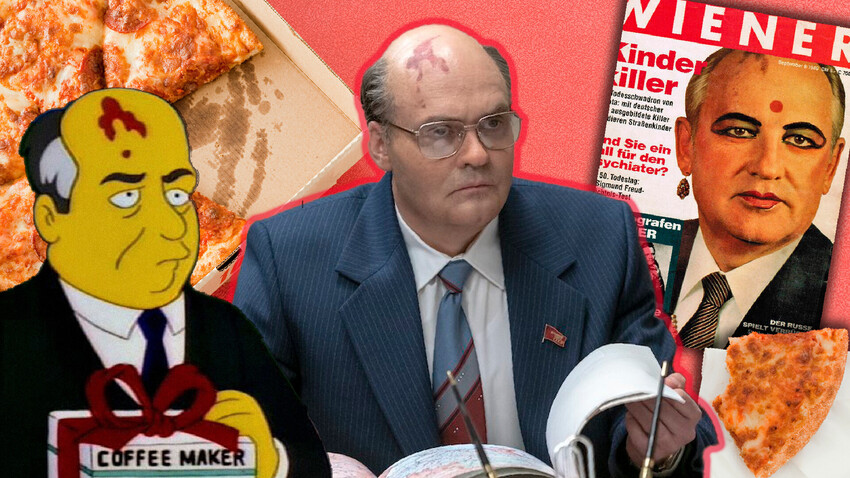
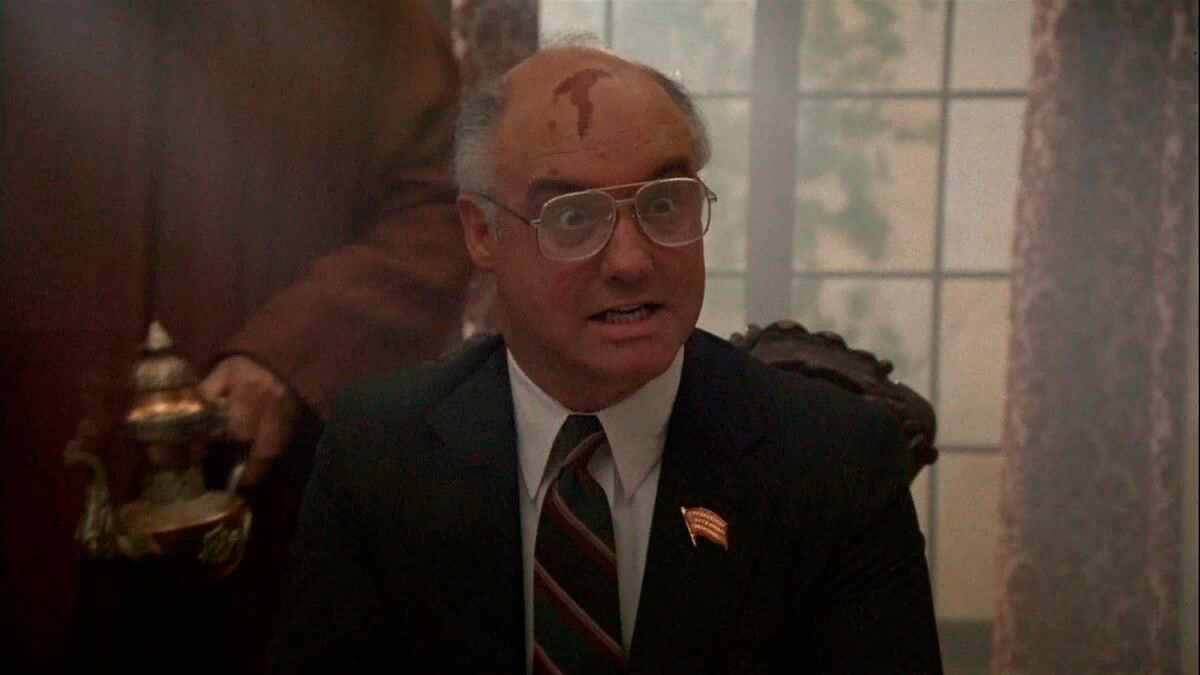
The American parody starring Leslie Nielsen speculated on why the Soviet president might actually not have a distinctive birthmark on his head. In the series, David Lloyd Austin stars as Gorbachev - a player in a global conspiracy against the United States. Incidentally, the actor got into character twice more: in the American movie ‘Midnight Train to Moscow’ (1989) and the TV show ‘Counterstrike’ (1990) starring Christopher Plummer.
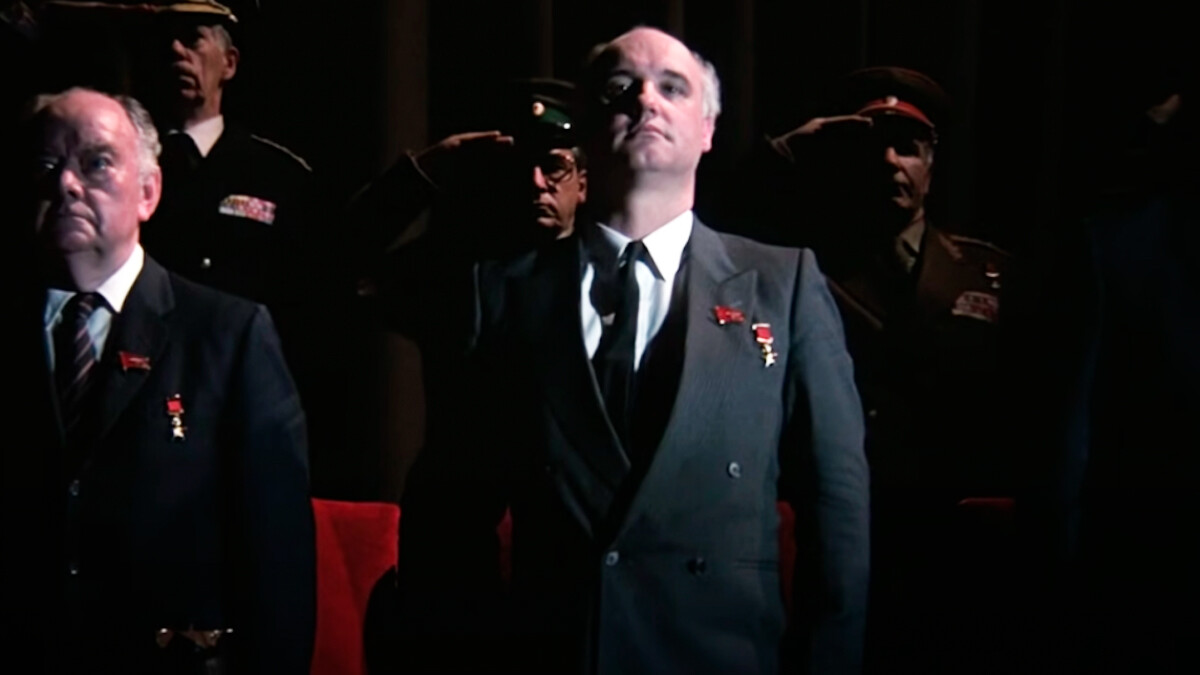
In the fourth part of the iconic franchise, Rocky Balboa takes on a Soviet killer machine Ivan Drago, who is, for some reason, under constant watch by the USSR secretary general himself (who is, incidentally, featured without a distinctive birthmark).
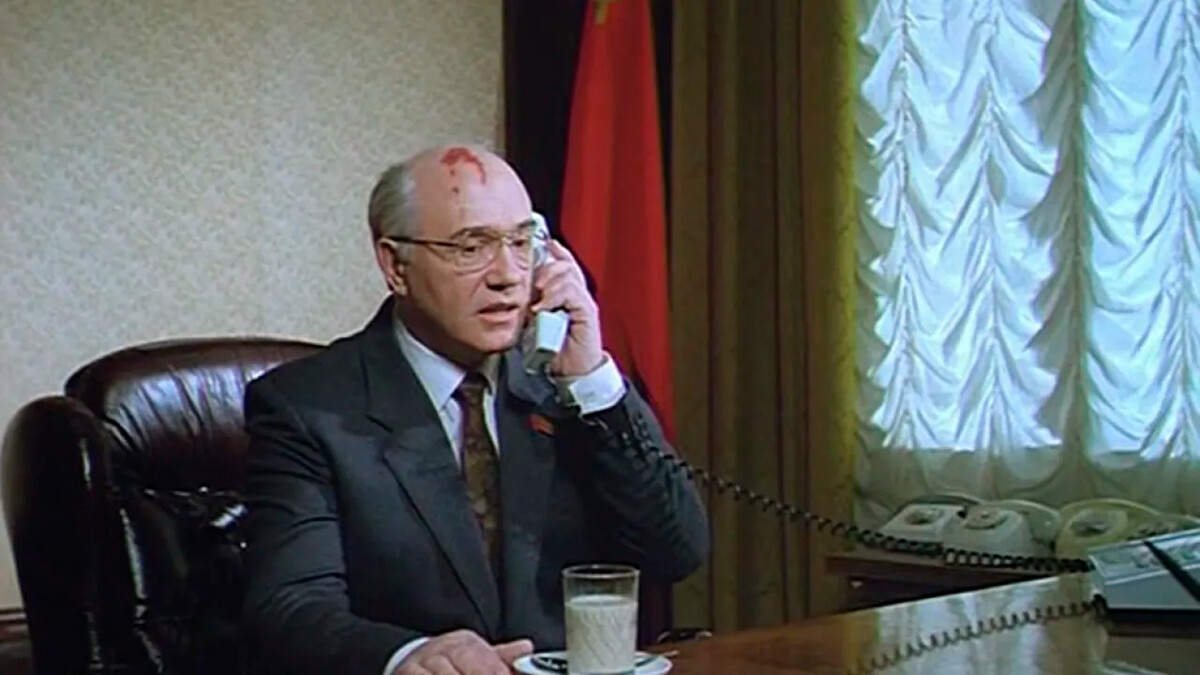
Soviet director Leonid Gaidai’s last movie begins and ends with humorous scenes, where Gorbachev’s talk over the classified phone line with George H. W. Bush is constantly interrupted by the head of “Russian mafia” Rabinovich.
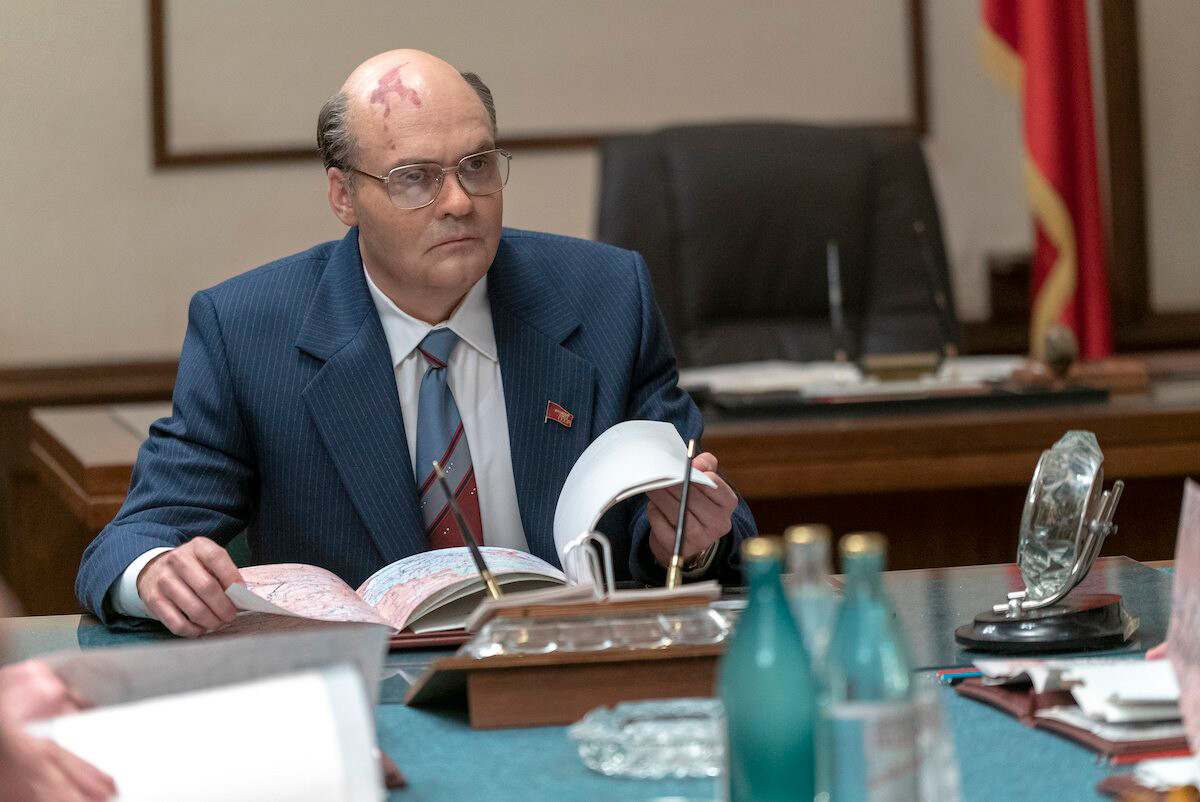
Gorbachev’s biography is inconceivable without the Chernobyl disaster, his role in the consequences and response to the emergency situation. In the HBO 5-episode series of the same name, the Soviet president was played by Swedish actor David Dencik, portraying Gorbachev as a still not so indifferent party functionary.
In one of the humorous sketches of the late 1980s on the ‘Saturday Night Live’ show, Gorbachev was played by Danny DeVito. In it, U.S. President Ronald Reagan takes the Soviet leader around the district of Columbia and tells the history of the U.S. based on Hollywood movies.
Gorbachev had a cameo in ‘The Simpsons’ animated TV show back in 1996: he asks George H.W. Bush to apologize to Homer Simpson, who he recently had a scuffle with. The U.S. president doesn’t fancy “showing his weaknesses to the Russians”, but, whatever the case, makes an apology in the end.
In 1996, a surprising music track saw the light of day: DJ Groove recorded a song called ‘Happiness Exists’ (Schastye Yest) using Mikhail and Raisa Gorbachevs’ voices at their own request. According to Evgeny Rudin (Groove), Gorbachev wanted to resonate with the younger generation. The experiment proved successful: the song became a hit track of the 1990s.
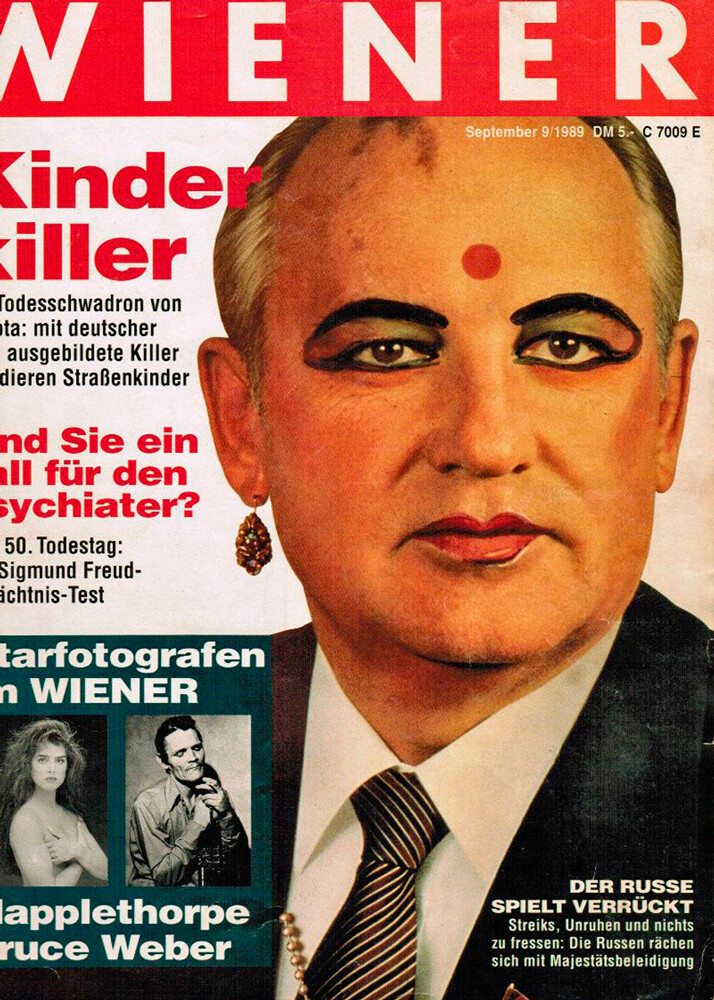
This portrait of Gorbachev was made while he was still in power, with the work even hitting the covers of Western magazines. Gorbachev depicted as an Indian drag queen is a work by artist Vladislav Mamyshev-Monro, who has a whole set of paintings called ‘Politbureau’ featuring Soviet party functionaries. The artist “changed” their clothes and “applied” makeup on their faces in case they wanted to flee the Kremlin, as one of the theories has it. This is a reference to a legend about a certain Soviet minister Alexander Kerensky, who allegedly escaped from Petrograd dressed as a woman.

A multiplied 40-piece portrait of Gorbachev was painted by Peter Max, one of the top pop-art masters. The Soviet leader took note of it and invited the artist to hold a personal exhibition in Leningrad (now St. Petersburg).
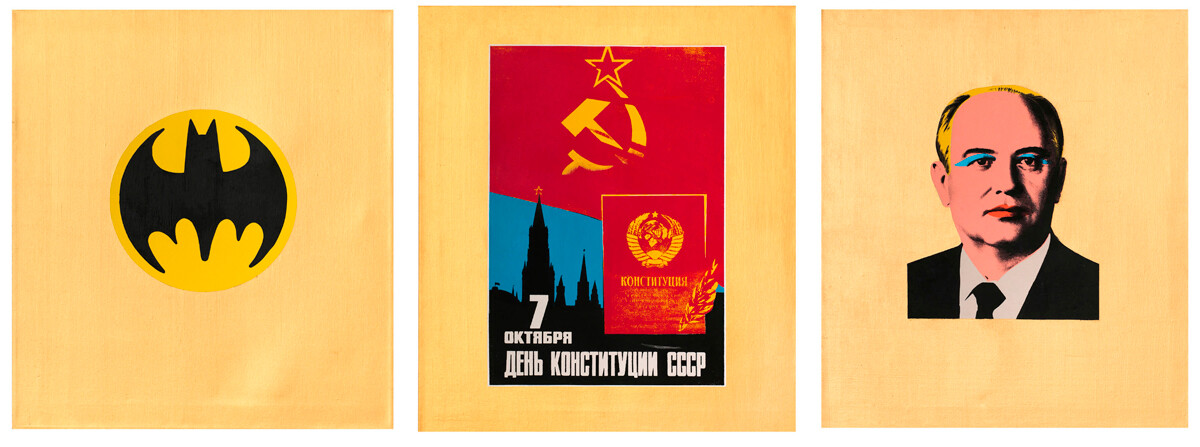
The social art classic combined the image of Gorbachev with the symbols of Western culture and Soviet propaganda after the artist had emigrated to the U.S.
Back in 1997, Gorbachev appeared in a commercial for American Pizza Hut restaurants. As the storyline goes, when he goes to the pizza restaurant, other visitors recognize him at once, engaging in a heated debate about the former Soviet president’s legacy. Some accuse him of ruining the country, while others praise the politician for uncovering new opportunities for people. The commercial ends with a remark by an elderly woman, that were Russians not to have Gorbachev, they wouldn’t have Pizza Hut.
In 2010, Time magazine included this video in the list of ‘Top 10 embarrassing celebrity commercials’. Gorbachev responded, saying he had accepted the offer to do the commercial, because he needed money to finance the Gorbachev Foundation and Green Cross International.
Gorbachev was a true fashion connoisseur and met a lot of famous designers in person during his time. In 2007, the politician (he was the only national leader to appear in a commercial) became the face of Louis Vuitton and took part in the brand’s advertising campaign. In the commercial, he sits in a car with a Louis Vuitton bag by his side and the Berlin Wall in the background. It was notably his own idea to shoot the video near the wall.
If using any of Russia Beyond's content, partly or in full, always provide an active hyperlink to the original material.
Subscribe
to our newsletter!
Get the week's best stories straight to your inbox